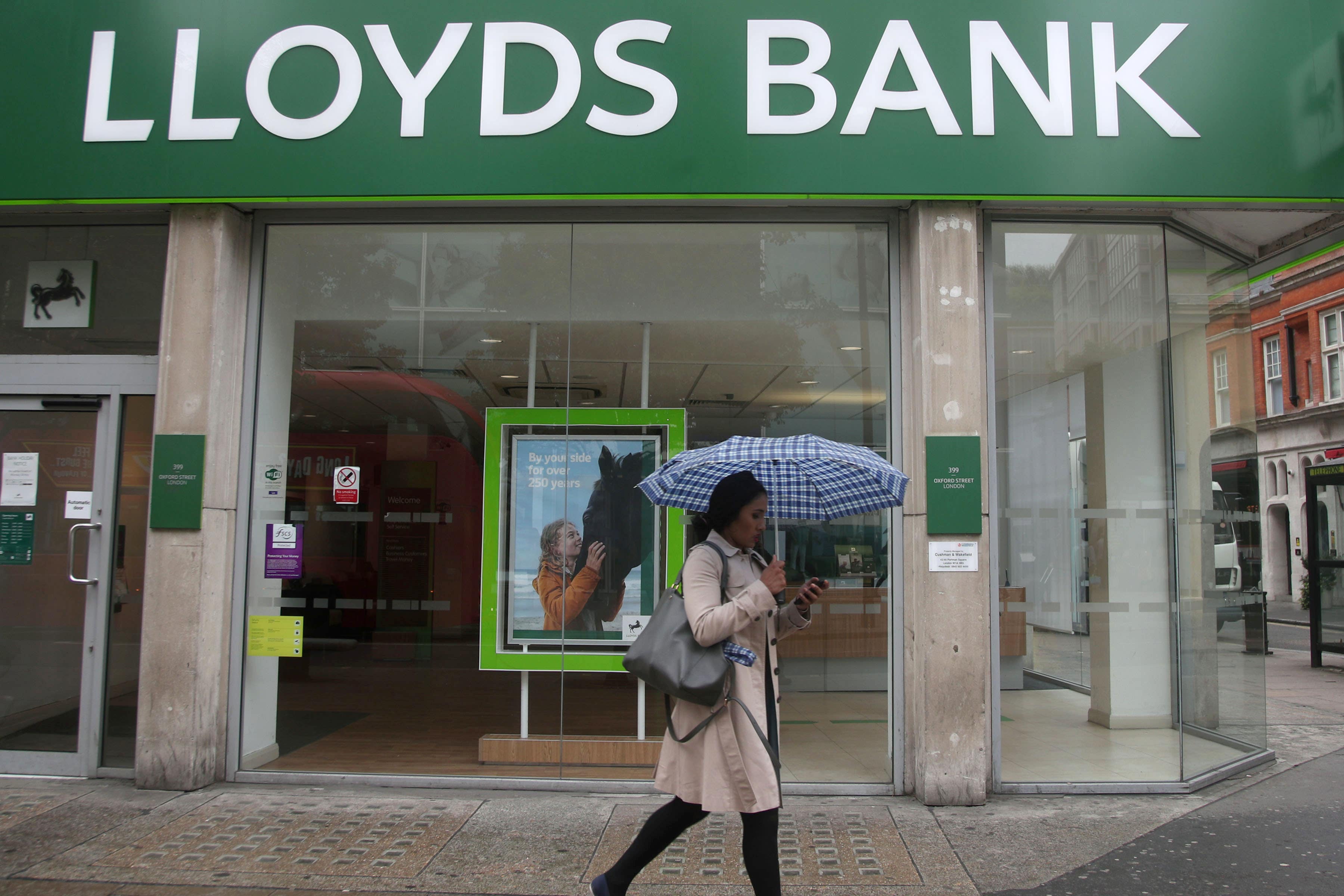Lloyds Bank guards against loan losses but hails ‘resilient’ mortgage customers
The UK’s biggest lender revealed it has set aside £668 million to cover loan losses this quarter.

Your support helps us to tell the story
From reproductive rights to climate change to Big Tech, The Independent is on the ground when the story is developing. Whether it's investigating the financials of Elon Musk's pro-Trump PAC or producing our latest documentary, 'The A Word', which shines a light on the American women fighting for reproductive rights, we know how important it is to parse out the facts from the messaging.
At such a critical moment in US history, we need reporters on the ground. Your donation allows us to keep sending journalists to speak to both sides of the story.
The Independent is trusted by Americans across the entire political spectrum. And unlike many other quality news outlets, we choose not to lock Americans out of our reporting and analysis with paywalls. We believe quality journalism should be available to everyone, paid for by those who can afford it.
Your support makes all the difference.Lloyds Banking Group has said most of its mortgage customers will be able to withstand cost-of-living pressures, despite the company revealing it has set aside £668 million to cover loan losses.
The UK’s biggest lender said its statutory pre-tax profits were £1.5 billion in the third quarter – a more than 25% drop from the £2 billion reported last year and falling short of the market consensus of £1.88 billion.
This was partly driven by a £668 million impairment charge in the three months to September 30, a big swing from the £199 million it held on to in credit last year.
Lloyds said this reflects a forward-looking charge to guard against the worsening economy and higher inflation and interest rate environment.
But it assured investors there has been only “very modest” evidence of customers struggling with repayments to date.
We are deliberately ensuring that we lend to customers who are best placed to withstand potential future stresses
Lloyds’ chief financial officer, William Chalmers, said: “So far at least, our customers are proving to be resilient and adapting well to the cost-of-living increases that we have seen.
“We are deliberately ensuring that we lend to customers who are best placed to withstand potential future stresses on the macro level and in their own personal circumstances.
“We have stress-tested mortgage customers for re-financing rates that are in excess of what we might see over the course of the next 12 months.
“In unsecured lending, we have put cost-of-living buffers in place, including a recent rise in affordability buffers to reflect the recent rise in prices for essentials.”
Customers falling into arrears, defaults and write-offs remain low and below pre-pandemic levels, the bank said.
Mr Chalmers added that Lloyds’ lending is skewed towards “slightly better off” customers to ensure they can pay back their loans if conditions get tougher.
The group has also seen its balance sheet boosted by bigger revenues on higher interest rates.
It said its underlying net interest income was up 15%, driven by a stronger net interest margin – which measures a bank’s returns versus their costs on loans – of 2.98% in the third quarter.
It comes as the Bank of England has increased the base rate over recent months to its current level of 2.25%, sending average mortgage rates higher and making it more expensive to borrow.
Looking ahead, Lloyds warned that the base rate could peak at 4% in 2024 before falling back.
Mr Chalmers admitted that this higher interest rate environment could lead to a slowdown in the housing market in the years ahead.
He said: “We are likely to see a bit of a slowdown in mortgage lending over the next 12 months in response to higher interest rates and a tougher macro-economic environment.”
In terms of savings rates, Lloyds will pass on just over 50% of base rate rises to customers during the second half of the year, Mr Chalmers confirmed.
At the current 2.25% base rate level, that would mean savers would see around 1.125% interest on their Lloyds accounts.
The lender has updated its full-year outlook, including raising its net interest margin expectations to at least 2.9%.